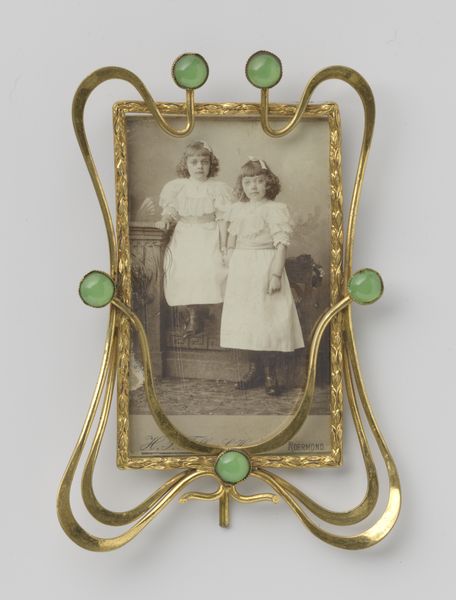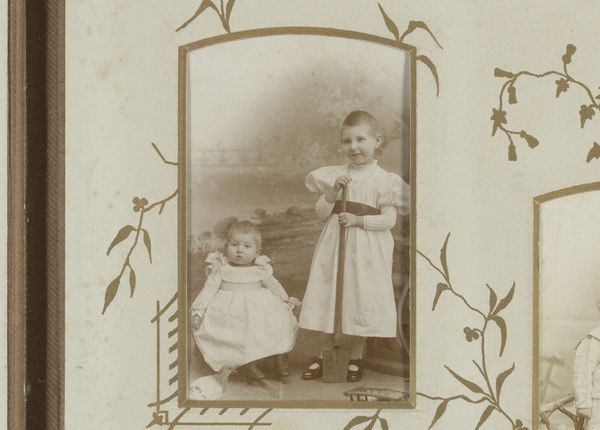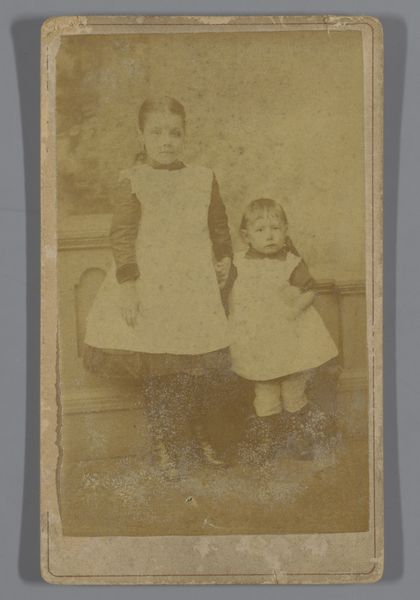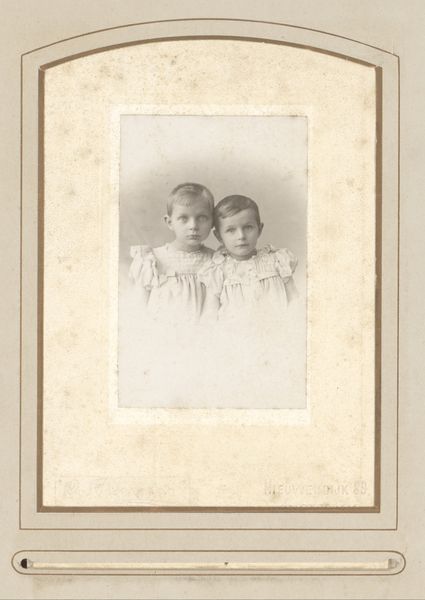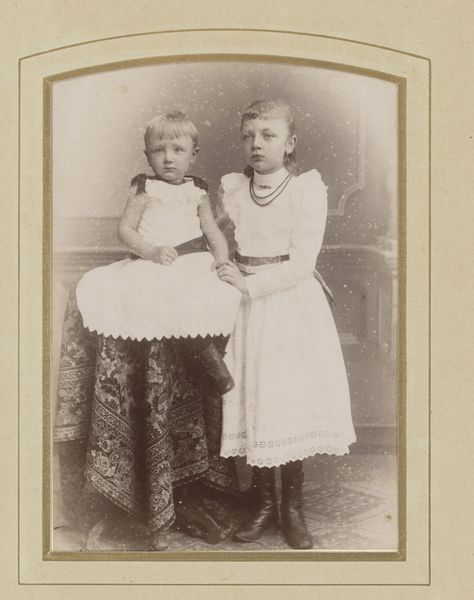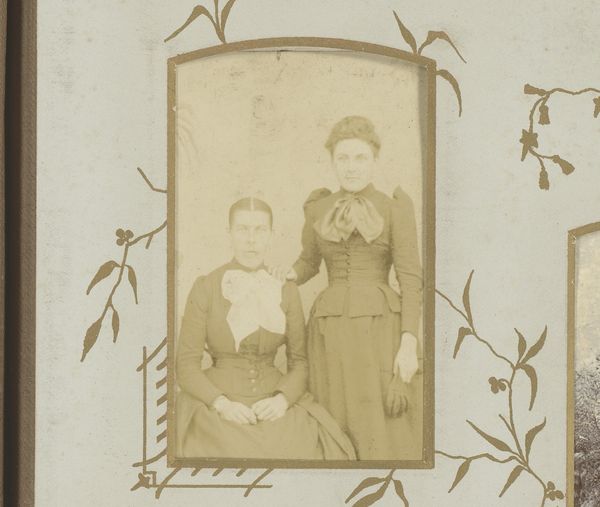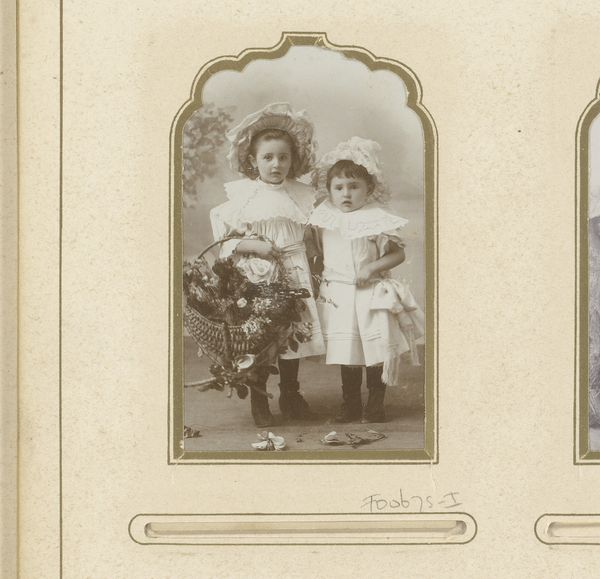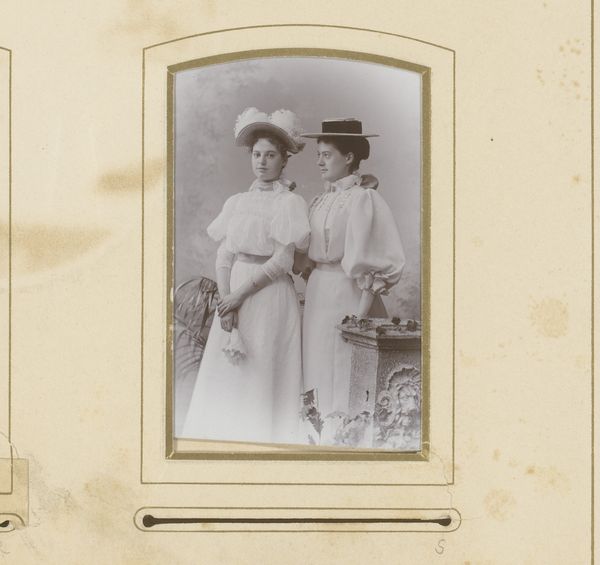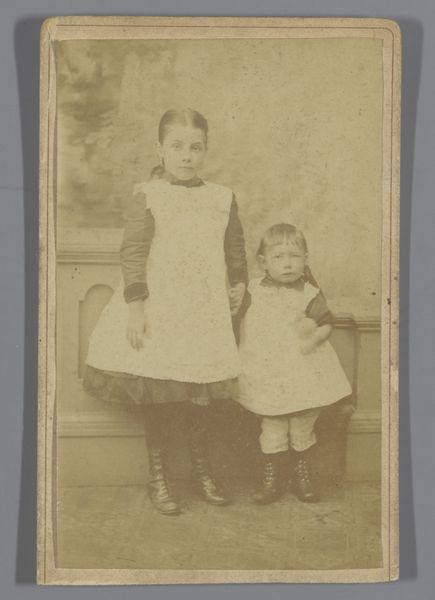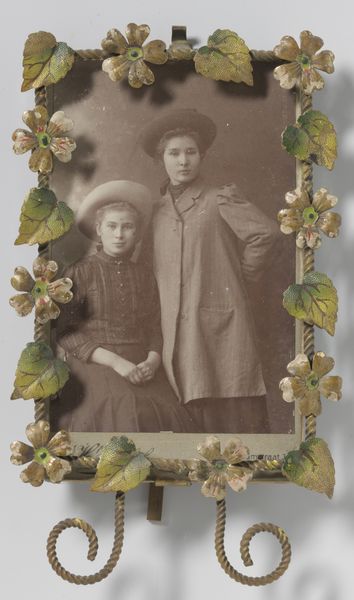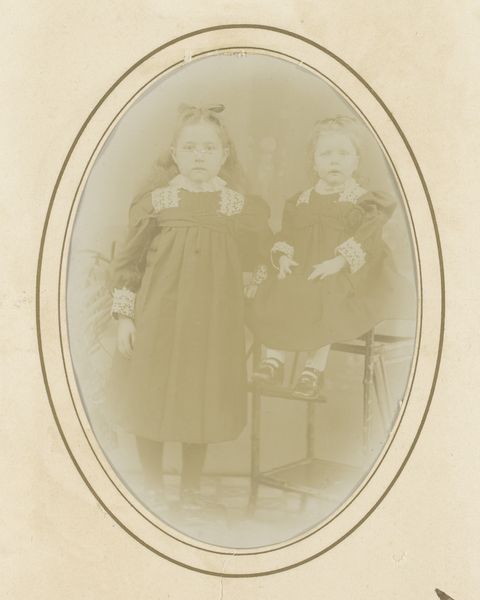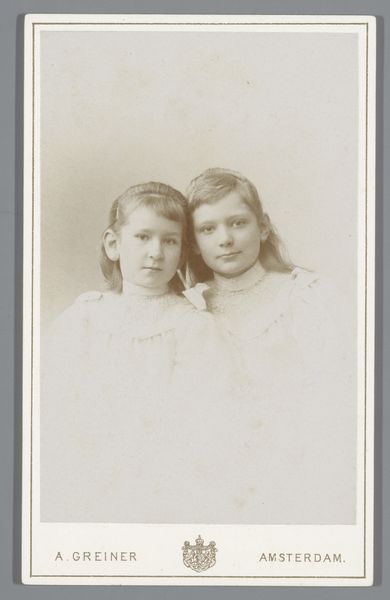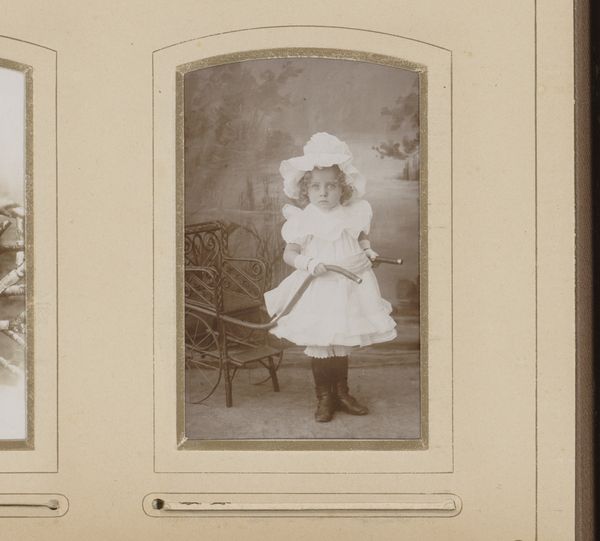
metal, photography
#
portrait
#
art-nouveau
#
metal
#
photography
#
historical fashion
#
decorative-art
#
decorative art
Dimensions: height 235 mm, width 136 mm, depth 18 mm
Copyright: Rijks Museum: Open Domain
Editor: Here we have “Portrait of Two Unknown Girls with Hats,” created sometime between 1897 and 1908. It’s a photograph nestled in a very ornate metal frame; the frame is what initially caught my eye! How does its medium influence its meaning, in your opinion? Curator: The conjunction of photography and the metal frame is crucial. Consider the socio-economic status implied by both. Photography was becoming more accessible, yet portraiture still signaled a certain aspiration. What sort of labour would it involve to craft this Art Nouveau metalwork, versus a simpler wooden frame? Editor: That's a good point. I suppose metalworking involves skilled labor and resources, whereas a wooden frame could be simpler, maybe even mass produced? So this particular choice says something about the patron’s access to more specialized craftsmanship. Curator: Precisely. Think about the raw materials and where they came from. Consider the division of labor, from mining to design to manufacture to consumption. Also, how the "high art" of portraiture in photography fuses with the "decorative art" displayed in its ornate metal frame. How does this fusion impact its reading? Editor: Well, it makes me reconsider how we separate art forms. We often think of decorative arts as 'lesser' than painting or sculpture, but here, the frame elevates the photograph, suggesting it's just as valuable, as intentionally created. Curator: Good. Notice how the photograph also captures the material culture of its time—the fashion, the setting. All point to a certain mode of production and consumption. The entire piece, not just the photograph, tells a story about the era’s values and manufacturing processes. What's one aspect you'll consider in similar works moving forward? Editor: Definitely the materials themselves, their origins, and the labor involved in their transformation. It adds another layer of meaning. Curator: Exactly. Examining materiality broadens our understanding from simply aesthetics to deeper questions about society and economics.
Comments
No comments
Be the first to comment and join the conversation on the ultimate creative platform.
